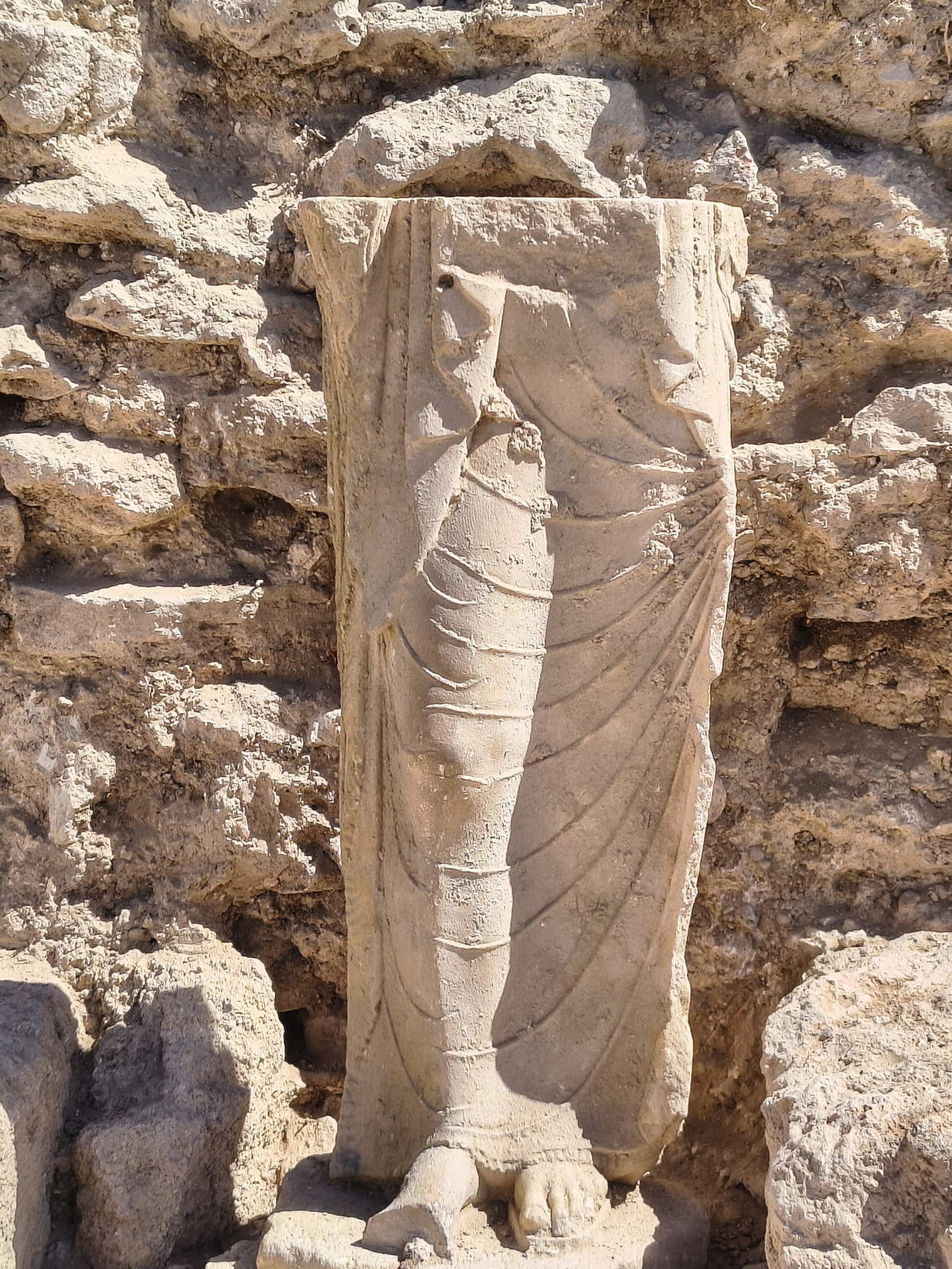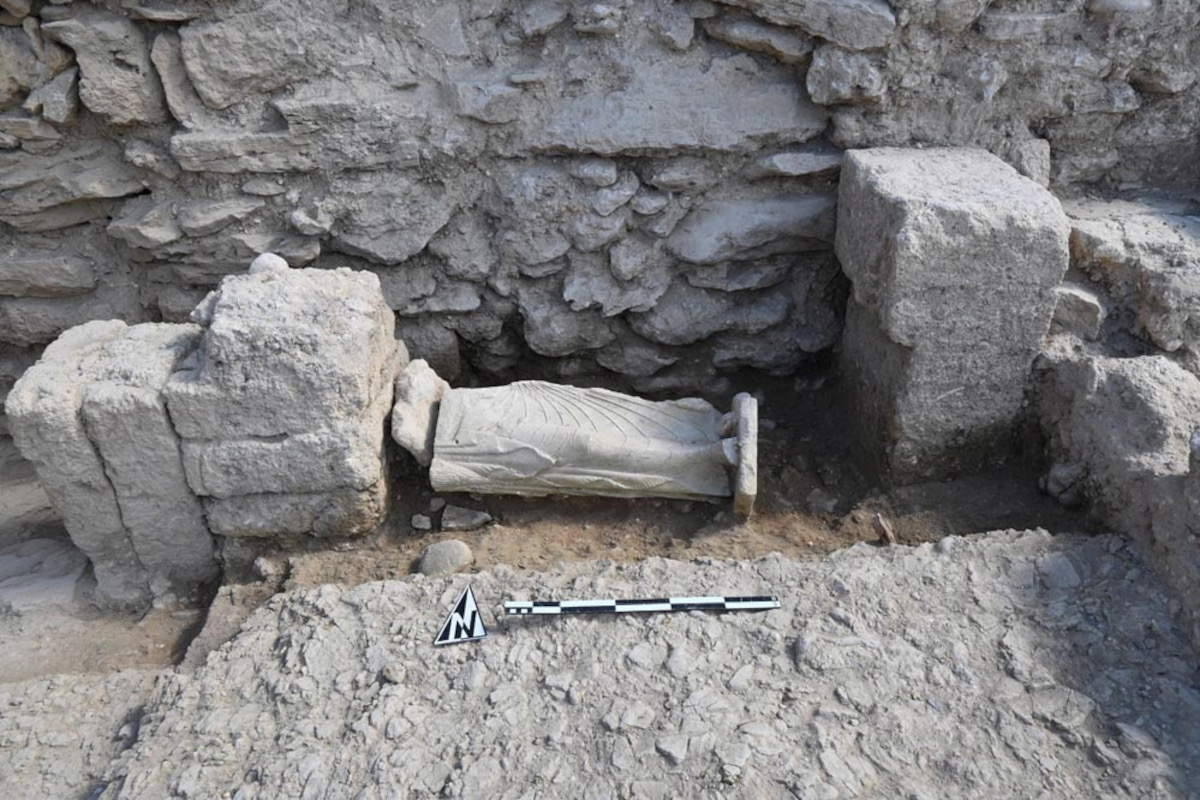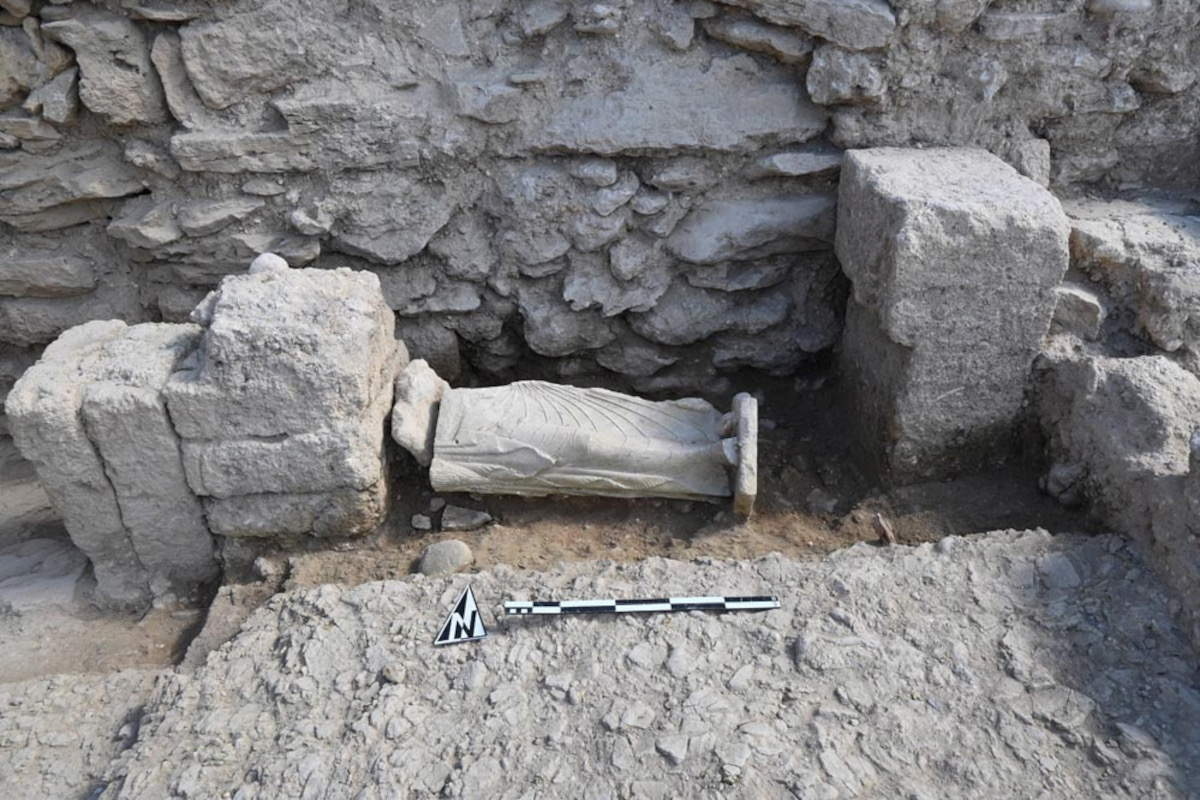During excavations conducted by the University of Palermo archaeological mission working on theisland of Mozia, in the province of Trapani, under an agreement with the Trapani Cultural Heritage Superintendency, a Greek marble sculpture was found: a female figure depicted as she appears to be advancing, dressed in a chiton (a sleeveless tunic) and a himation (garment made from a rectangular cloth, draped over the left shoulder), lacking the upper torso and head.
The statue measures 72 centimeters in height, including the small base on which the feet rest. The breakage of the bust is not due to accidental damage, but results from a technical cut in the stone, as indicated by the presence of two holes with remnants of metal elements used for connection, indicating that the work was composed of at least two separate blocks.

The find was found within the “Pottery” of Mozia (Area K), one of the largest Punic ceramic workshops in the central Mediterranean. The statue lay horizontally on the edge of a basin that contained the clay used in the making of vases and figured earthenware in the 5th century B.C., a period of the city’s greatest development and productive activity. The removal and deposit of the statue seem to date from the final phase of the workshop’s use, probably coinciding with the beginning of the Dionysian siege in 397 BC. It can also be speculated that the sculpture was originally located within the workshop itself, in connection with new wall structures that emerged during the excavations.
The discovery of the statue confirms the presence of valuable Greek artwork in the Phoenician city and helps paint a picture of intense cultural interactions in the context of Greco-Punic Sicily.
“This discovery,” said Regional Councillor for Cultural Heritage and Sicilian Identity Francesco Paolo Scarpinato, “confirms the importance of the research and protection work we carry out every day. It is an important discovery that testifies, once again, how much Sicily has been a crossroads of civilizations over the centuries, but above all how much the island continues to return us precious testimonies that deserve to be known and shared.”

 |
| Sicily, part of a Greek marble statue found on the island of Mozia: depicts a woman |
Warning: the translation into English of the original Italian article was created using automatic tools. We undertake to review all articles, but we do not guarantee the total absence of inaccuracies in the translation due to the program. You can find the original by clicking on the ITA button. If you find any mistake,please contact us.